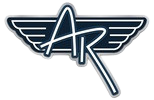Those who own classic vehicles do so for various reasons, and one of the more common a desire to actually drive - or at least turn on - these vehicles periodically. Certain particular classic cars may involve more challenges here than others do, and one of the best examples of this concept is for any classic race car, such as a Formula 1 car, NASCAR vehicle or some similar specialty car.
At Andersen Restoration Parts, we're here to offer an unmatched selection of classic car parts for any vehicle type, including everything from sway bar link and bushing sets to suspension kits, idler arms and numerous other options. Many of those who own classic race cars are already aware of a common issue they sometimes have: They may take quite a while to start up, even several hours in some cases. Why is this, and what can be done to limit the time it takes to start up one of these vehicles? Let's have a look.
They Always Have
First and foremost, it's vital to note that in many cases, older race cars were specifically designed to take some time to start up. As opposed to modern cars that are mostly equipped for convenience and ease of use, these classic models may require a bit more effort and time in order to get going.
As we'll dig into further in subsequent sections, this is due to the simple complexity and age of the components and systems involved. In other words, classic race cars are designed to be more challenging in terms of startup time compared to their modern counterparts.
Let's look at some of the more distinct reasons why this is the case.
Need to Pre-Heat the Engine
For many of these classic race cars, preheating of the engine is essential in order to reduce the overall startup time. This isn't something that applies for all cars, but it does become necessary for certain models (especially those with more complex designs).
In other words, firing up an older race car can be quite similar to what's necessary during cold winter days - preheating the engine before attempting to start it up. This process can involve adding some kind of heating element (like a fuel-injected heater) or simply waiting for the car to warm up on its own.
Charging Onboard Air Cylinders
Another key aspect that can affect startup time for certain classic race cars is the charging of onboard air cylinders. This may be necessary to provide additional power or boost in order to fire up the engine, and depending on the type of vehicle, it could take several minutes to a few hours in order to properly charge these cylinders.
These cylinders are vital for several reasons, including providing air to actuate the valve springs - these are the same springs that open and close the intake and exhaust valves. So, in order to fire up a classic race car, it's essential to have enough air to actuate these valve springs.
Older or Nonexistent Computer Systems
While modern race cars utilize advanced computer systems to fire up the engine and start the car, many classic race cars don't offer such a feature. Instead, they must rely on manual intervention, which can add more time and effort in some cases.
Without the help of an onboard computer system, certain classic race cars may require more attention when it comes to starting them up - and this can add several hours to the process.
Cold Temperatures Can Have an Impact
We alluded to this concept earlier, but it's worth noting that cold temperatures can also have a significant impact on the time it takes to start up an older race car. This is due to the fact that certain components may be slower to warm up in these conditions, thereby adding more minutes - or even hours - onto the overall process.
Tips for More Efficient Start-Up
If you're looking for ways to reduce the time it takes to start up a classic race car, there are several tips you can follow:
For more on this, or to learn about our wide selection of classic car restoration parts, speak to our team at Andersen Restoration Parts today.

